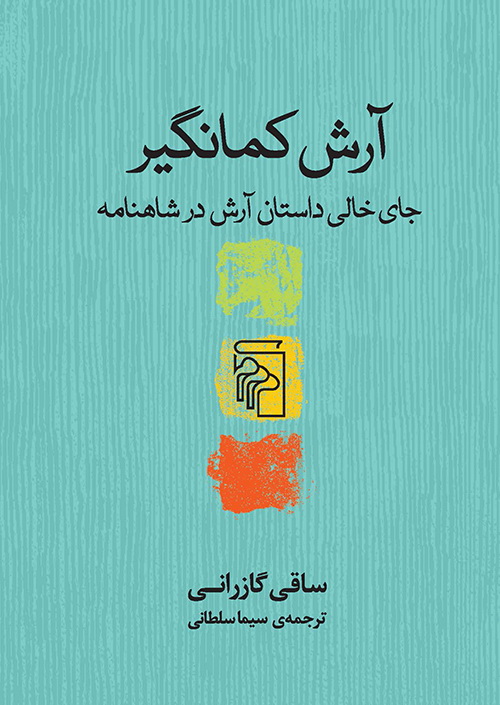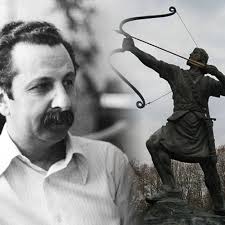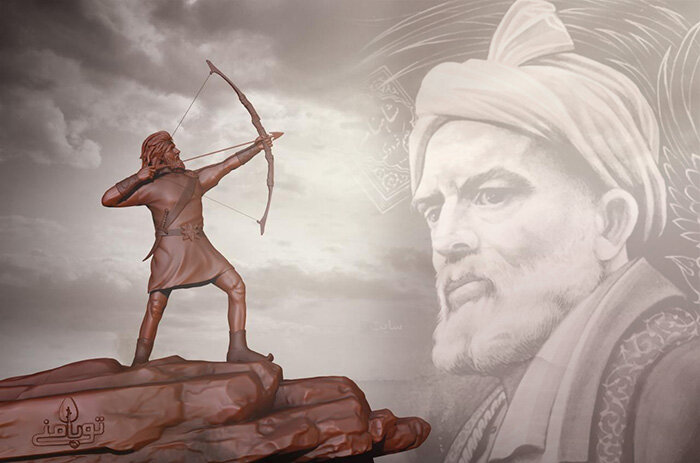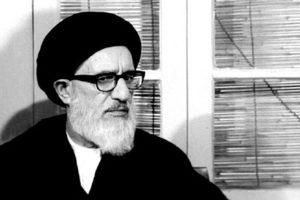Forozan Asif Nakhai: Arash, Damavand, Kaman, Tir, and finally Iran. The five main elements in the myth of Arash are the archers. But it may be asked why Arash’s death after throwing the arrow is not among the five main elements? The answer is that there is a very close relationship between Iran and its youth; The life of the youth means the life of Iran and vice versa. Therefore, death in this valley is meaningless. The link and mediator between the life of Iran and a young man named Arash is his precise targeting to preserve and revive the civilization of Iran. So, if Iran remains, but Arash’s body does not exist, its name will always remain with Mount Damavand. Mount Damavand is the last cosmic step to enter the sky to achieve eternal life. Because whenever we see Mount Damavand, Arash is standing on its peak, and whenever we go to the community, it is as if we are watching young people, both men and women, next to each other, as new archer Arash. really why
Because Arash was able to revive Iranian civilization. He means those young people whose great thoughts are able to maintain the boundaries of identity between outside and inside and crystallize the objective dimensions in the territorial domain. In essence, Arash Kamangir is the concern of the nation, which is worried about the future, the audience and the supporter of its representative to see how he will travel this path, and if he fails, someone else will be the observer who will use this bow and arrow in every sphere of life. The sentence should include especially science, university and politics and recover its identity from the perspective of real Iranian Islamic civilization.
From this point of view, in the myth of Arash Kamangir, Arash is not a person; It is the manifestation of thousands of years of human life and the existential gem of a nation that has always been concerned about justice and freedom. A nation that considers taking millet seeds from the mouth of the Moor as injustice and is ready to die for its opponent so that he can enjoy freedom of speech with all his heart. The prospect of such an approach is huge. The people we see in the streets and markets are the representatives of this culture and also its nurturers. For this reason, one should give as much importance to the young as to the old, and also to the elderly as much as to the young. Because every one of them is alive, they are in some way preparing to create the identity magnetism of Iranians in their realm of existence. An existence that is rising in all fields. A philosophy that is always able, between earth, time and sky, to watch and interpret the rainbow path of billions of people individually and collectively in different groups and cultures in an astonishing rainbow. In this field, the archers, with their goals, constantly turn a part of our human identity in front of us and keep the book of evolution always open.
Therefore, it is necessary to know that Hakim Tus Ferdowsi, this giant of myth-telling of the world, is another Arash Kamangiri himself, and if we vote on the style of interpretation, we can say that Ferdowsi himself was the Arsh Kamangiri of his time by compiling the Shahnameh. Can it be said that Arash Kamangir, who determined the border of Iran and Iran with his life, Ferdowsi in his own time put his sweet life in the bow of Persian literature for 30 years and Shahnameh became a pillar of Iranian culture that is rooted in eternal existence. He threw it towards the existence of people and the world, and made that place the border of Iranian identity?
***
With all the producers and researchers of the article Deep Stories Arman Hafezi, Ashkan Hafezi, Majid Gholami and Mehrad Bandani raise the question, “Why do we not see the name and address of Arash Kamangir in Ferdowsi’s Shahnameh?” This report, which was taken from Arash Kamangir’s video file on YouTube, tries to give the necessary answer to this question. The editor of the program emphasizes, “This question has occupied the minds of researchers for many years, and one of the books that deals with this issue is a book called “Arash Kamangir” written by Saqi Gazrani and translated by Sima Soltani.” According to Gazrani, the absence of Arash’s name in Shahnameh had various reasons. One of the reasons for this could be that Arash’s story took place in a time when Shahnameh in its current form did not yet exist. In this era, epic and mythological stories were told orally and it is possible that the story of Arash was one of these stories. Another reason that Gazrani puts forward for the absence of Arash’s story in the Shahnameh is that this story was not compatible with the ideology of the Shahnameh. In Shahnameh, heroes are usually people who go to war with sword and armor and win. But Arash’s story introduces a hero who sacrifices his life with his arrow. This has not been compatible with the ideology of the Shahnameh, which emphasizes the bravery and physical strength of the heroes.”

Hafizi continues: “It was during Manouchehr Pishdadi’s time that Afrasiab brought an important part of Iran under his control. It was decided that an arrow would be released from the land of Tabaristan by the Iranian army. And wherever it lands on the ground, the border of Iran and Turan should be determined there. Therefore, Arash the brave young Iranian archer went to the top of Damavand mountain, he puts all his strength in the quiver of the bow and John Berkaf releases an arrow from the bow with all his strength, the arrow flies, this arrow is believed to be a legend of God was accompanied by the wind, and 10 days later, a tree sat on the side of the Jihun river and revealed the border between Iran and Turan. They made that place the border of Iran and Turan, and in this way the borders of Iran expanded and the war ended. And Arash sacrificed his life for Iran.
He further emphasizes that “Arash is a very popular character and a symbol of patriotism in Iranian culture and history.” Usually, when someone loses his life to protect the borders of the country, this person is compared to Arash Kamangir. »
This researcher in the field of myths of Iran and Earth, pointing out that “there is no doubt that the story of Arash Kamangir has existed in Iranian literature since ancient times,” continues: “But during the last 100 years, when political movements spread in Iran, the Middle East, and even the world Found, it happened a lot, different people with political leanings went towards this story. They made changes in it, but first we have to see where Arash’s story came from and where is its origin?”
The origin of the myth of Arash Kamangir
Hafizi says: “The first source that comes to our mind is undoubtedly Ferdowsi’s Shahnameh, because the majority of epic and even historical characters are in Ferdowsi’s Shahnameh.” But when you refer to the Shahnameh, you will be surprised to see that there is no trace of the story of Arash Kamangir. So where did Arash Kamangir appear for the first time? The first time the story of Arash Kamangir was seen somewhere, it was in Zoroastrian writings. The Avesta works were the first works that mention a character named Arash.
“Arash lives on as a mythical figure, and is a respected legend for people,” he says. until we reach the Parthian kingdom. Parthians have had the longest history of government in Iran. And they have been the undisputed rulers of Iran for nearly 500 years. The Parthians, like many other governments throughout history, made their own propaganda about their sovereignty.
Ashkanian and Arash Kamangir
Hafizi continues to attribute the transformation of the myth of Arash to the generation of the Parthian dynasty, in the sense that the Parthians for the first time gave physicality to the myth of clothing and became a means of obtaining legitimacy for the royal family. Hafizi says: “The character of Arash was an unreal character before Arshkanian came to power and existed only in Avesta writings. But the Parthians confiscated this character and attributed the lineage of their royal family to Arash.”
He then points to Ferdowsi’s only poem about Arash and says: “Ferdowsi rarely deals with the Parthians in Shahnameh and believes that there is not much information about them.” Only in part he writes like this:
Elders to hatch
Brave, light-winged and rebellious body”
This mythology researcher continues: “Even if you pay attention to the Parthian coins, Parthian kings are usually depicted with a bow in hand. All of which showed that the Parthians liked to attribute their generation to the character of Arash Kamangir.
The fall of the Parthians and the fate of Arash Kamangir in the Sasanian dynasty
Hafizi then mentions the fall of the Parthians and the rise of the Sassanids and the fate of Arash Kamangir and says: “After the fall of the Parthians, the Sassanids gained power.” The Sasanians were strongly opposed to the Parthian legacy. And they tried their best so that the culture and even the works of art of the Parthian period would not affect the people of Iran. Meanwhile, the character of Arash Kamangir was marginalized. Because Arash was reminiscent of the Parthian dynasty, and this made the Sasanians angry. Then everyone puts forward their own interpretation of Arash. A process that has continued since ancient times until today.
In other words, can it be said that this spirit that every dynasty is efficient, negates all the works of its previous dynasties by looking at its elimination, and in Iran, the elimination of competitors has ancient dimensions and historical roots?

Siavash Kasraei
Contradictory information about Arash Kamangir during Ferdowsi period
This researcher in the field of mythology continues: “Ferdawsi started writing the Shahnameh after Islam. This is the period when the information about Arash is very conflicting and even limited. Ferdowsi wrote the Shahnameh based on ancient Iranian texts. Some of these sources have changed a lot due to the passage of time. Some were also very imperfect. The Shahnameh deals mostly with the history of Iranian kings and dynasties. “Although Arash Kamangir is a great hero, he was not in the form of a royal character or related to the court. Ferdowsi had tried to create an epic work by telling stories that are directly related to the kings of Iran.”
Hafizi continues: “When Islam entered Iran, some of the ancient Iranian figures and myths faded, it is said that Arash Kamangir was one of these figures who became part of the cultural changes. Something that in the following years made us not see any traces of this character in Ferdowsi’s Shahnameh. Although in the following years we see that Arash Kamangir appears, this time some versions of the story are different from each other. But Arash’s character has found its main place. Especially in the modern era, the character of Arash Kamangir has been discussed more than ever before. For example, Siavash Kasraei recreated this myth in his long poem Arash Kamangir and considered it a symbol of sacrifice and nationalism.
He talks about other modern works about Arash Kamangir and says: “There are other modern works in the field of dramatic literature and short stories, which have also raised the importance of Arash again. There are various reasons for the absence of Arash Kamangir’s story in Ferdowsi’s Shahnameh. For example, the limitation of resources during Ferdowsi’s time is one of the reasons. One of the main reasons can be the cultural and religious changes during the Sasanian era and then the rise of Islam. However, this eternal myth is still alive in the heart of Iranian literature and has been an inspiration to different generations throughout the centuries.
Other sources that emphasize that Arash Kamangir’s name is mentioned in the Shahnameh
But in Other sourcesIt is emphasized that “Ferdowsi did not ignore Arash Kamangir and mentioned him well several times.” On the “Khordegan” site, which produces content in the field of Iranian history and culture, it is stated: “The story of Arash and his shooting, as Thaalabi, Aburihan Biruni and Gardizi have said, did not appear in Ferdowsi’s Shahnameh, but in verses of Arash’s name and Tir has mentioned Arash and even Arash’s story, which shows that Hakim Tus was well acquainted with Arash’s story.”
Here are some of Ferdowsi’s references to Arash:
In the conversation between Arjasp and Gestasp:
From that wound of that fiery side
Samish mace and Arshi arrow
(Shahnameh, Khaleghi Motlaq, 1393: Vol. 5, p. 129).
In the story of Khosrow Parviz and Bahram, which refers to Shah Zaman Arash:
Who was the king during Arash? Say!
This conversation is not for me!
So said Bahram Kangah Shah
Manouchehr was with straw and army!
(Ibid.: Vol. 8, p. 33).
Or in Khosrow’s answer to Shiroviyeh, which refers to the long distance of Arash’s arrow throw:
Cho Arash that you took to Farsang Tir
The winner of Karan Shirgir!
(ibid: p. 350).
As Deep Stories researchers quote from Saqi Gazrani’s book about Arash Kamangir and emphasize that Ferdowsi did not name Arash Kamangir as he should have, at least in the cases mentioned on Khordegan’s website, it disproves the said theory. But it should not be forgotten that even if Ferdowsi did not mention Arash Kamangir like Rostam Dastan as he should, but it must be said that from the point of view of national thought and Iranian thinking, he is another Arash Kamangir who leads the way of humanity, chivalry, courage and patriotism. It revives poetry in dimensions and form of language and in a way revives Iran.
Read more:
Iran’s artificial intelligence recreated 2,500 years ago / film
Achaemenid and Sasanian rule; From which did the brains flee and to which did they seek refuge? / Greek and Roman art in Persepolis and religious migration in the Sassanids
Achaemenid Persian, Middle Persian and Modern Persian / Enmity of British colonialism with the Persian language / How was the world of Persian-speaking cities formed?
216216
منبع: www.khabaronline.ir




